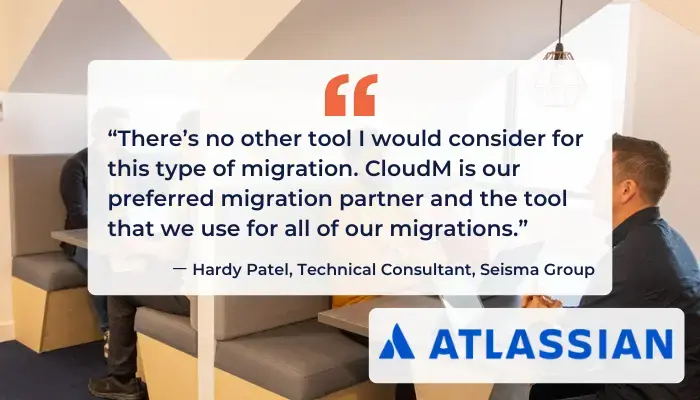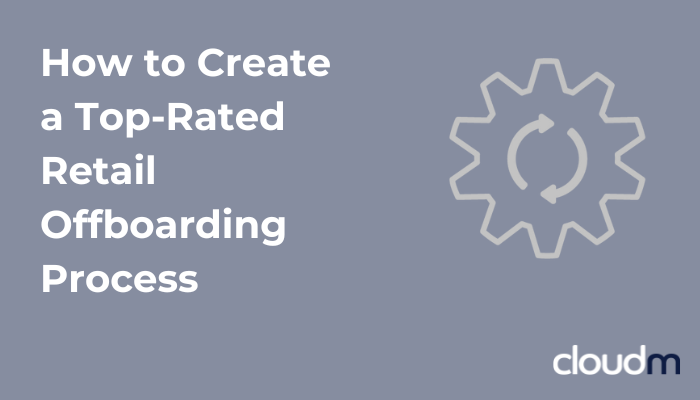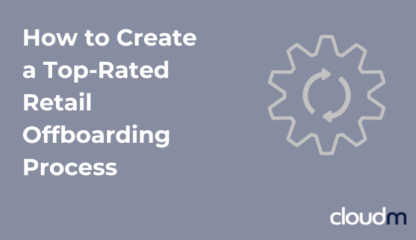How to create a top-rated retail offboarding process
When a retail associate leaves unexpectedly and an offboarding process is overlooked, it doesn’t take long for small oversights to turn into big problems. Employee transitions are part of every retail business, but without offboarding processes, they can expose both security and operational risks. From unrevoked system access to misplaced store devices, mismanaged employee exits can compromise data and productivity.
A top-rated retail offboarding process is about creating a secure, automated workflow that ensures every departing employee leaves the digital environment as smoothly as they do the physical one. Before outlining the steps, it’s worth exploring why it deserves more attention.
Table of contents:
- Why retail offboarding deserves more attention
- Automation in retail offboarding
- Step-by-step retail offboarding process
- Plan ahead
- Communicate the departure and create an employee-specific plan
- Transfer role-specific knowledge
- Revoke access and physical assets
- Complete payroll and benefits
- Conduct an exit interview
Why retail offboarding deserves more attention
Employee offboarding is critical to security, compliance, and operational efficiency. Similar to a positive retail employee onboarding process, a positive exit experience also enhances the organization’s reputation, helping attract future talent and strengthen organizational culture. In retail, high employee turnover and seasonal staffing make offboarding especially vulnerable. Without a structured process, the organization faces:
- Security risks
- Operational disruptions
- Compliance issues
- Damaged brand reputation
- Missed opportunities for valuable feedback and insight
Automation in retail offboarding
Automation also plays an important role in the retail offboarding process. Managing offboarding manually puts a huge drain on IT resources and increases the risks outlined above. Therefore, automation should play a critical role in the retail offboarding process. When an automated workflow is triggered, it initiates the removal of the employee’s access to email, POS systems, and other company applications, minimizing the risk of human error. They can also help track the return of devices, badges, and other assets, ensuring nothing is overlooked. Beyond security, automation in retail offboarding saves time for HR and IT teams, maintains consistency across multiple locations, and allows managers to focus on running the business rather than manually managing offboarding tasks.
Step-by-step retail offboarding process
Creating a structured offboarding process helps ensure every exit is handled consistently and securely. By following a clear workflow, retailers can protect their systems, recover assets efficiently, and maintain smooth operations across all locations.
1. Plan Ahead
Effective offboarding begins long before an employee’s last day. Pre-planning involves creating a clear checklist of tasks, assigning responsibilities to HR, IT, and store managers, and scheduling key dates such as the final shift and exit interview. Leveraging offboarding automation can help streamline this process by triggering tasks, sending reminders, and ensuring important steps are completed consistently.
2. Communicate the departure and create an employee-specific plan
The internal communication on an employee’s exit prepares employees and relevant stakeholders on what to expect through the transition. Timelines, responsibilities, and expectations must be clearly communicated, and a tailored offboarding roadmap should be created for each affected employee, ensuring their specific needs are addressed.
3. Transfer role-specific knowledge
Regardless of whether a replacement has been hired, the organization needs to preserve the departing employee’s knowledge. At this stage of the retail offboarding process, teams should document the employee’s core responsibilities, identify which tasks take priority, record access permissions to systems and files, and list key contacts inside and outside the company. To make the transition smoother, the departing employee can create a handover document outlining essential workflows, insights, and tips for whoever steps into the role. If a successor is already in place, the retail employee onboarding process should begin right away.
4. Revoke access and physical assets
The next step is to revoke digital access and recover company assets. Access to systems, email accounts, and digital tools should be disabled through automated offboarding software that tracks and confirms each action. Physical items such as laptops, smartphones, and keys must also be collected and recorded.
5. Complete payroll and benefits
Address finances and legal considerations with the employee before their departure to ensure alignment on:
- Final paychecks
- Vacation days
- Post-employment benefits
- Severance packages
- Labor law compliance
6. Conduct an exit interview
The exit interview, typically led by HR and the department leader, is the final opportunity to obtain feedback from the departing employee. The goal of the interview is to understand the reasons for the exit, enabling the company to address issues that may be present within the organization.
Automate Retail Offboarding With CloudM
A retail offboarding process is a safeguard for business continuity, security, and brand reputation. It protects company data, preserves valuable knowledge, and leaves employees with a lasting positive impression of the organization.
By integrating automation in retail offboarding by using tools such as CloudM, retailers can centralize user management, revoke employee access instantly, and maintain complete control over company data protection, regardless of the number of stores or seasonal hires they manage.
An effective and automated offboarding strategy strengthens trust between teams, systems, and the organization as a whole. Learn more about offboarding automation with CloudM today.
Book a call with our specialists today











